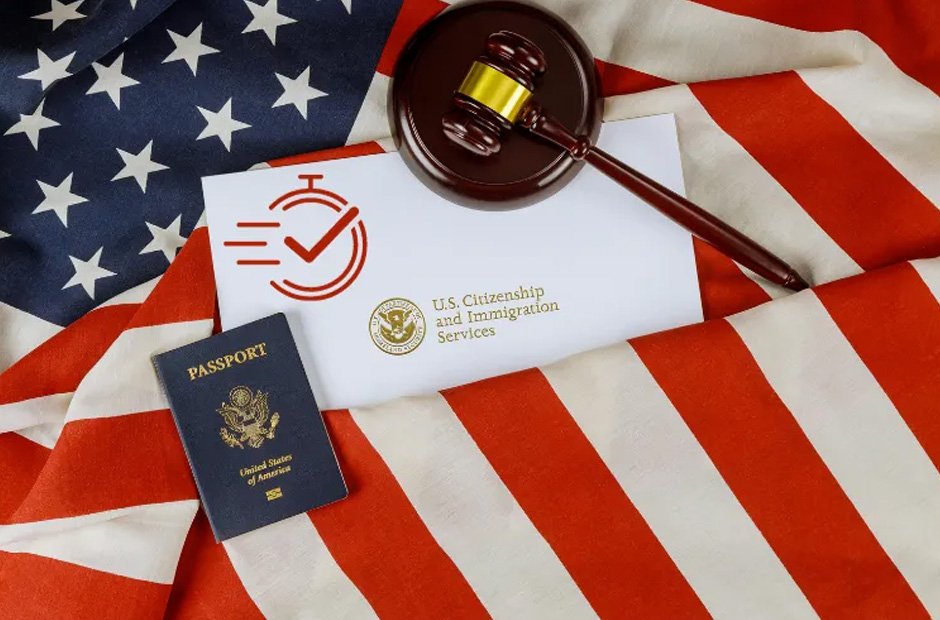Two people with similar backgrounds file immigration petitions at roughly the same time. One moves through the process in a few months with minimal issues. The other gets buried in requests for additional evidence, faces months of delays, and might ultimately receive a denial that requires starting over.
The difference between these outcomes often has less to do with the applicant’s qualifications and more to do with how the case was put together in the first place. Immigration petitions succeed or fail based on factors that aren’t always obvious to someone going through the process for the first time.
The Documentation Problem
Most immigration cases that stall do so because of documentation issues. Not missing documents necessarily, but documentation that doesn’t quite answer what the reviewing officer needs to know. The petition might include a stack of papers, but if those papers don’t directly address the legal criteria, they don’t move the case forward.
USCIS officers work from specific regulatory requirements. They need to see evidence that maps clearly to those requirements. A petition might include impressive credentials and accomplishments, but if the connection between those achievements and the legal standard isn’t spelled out clearly, the officer has to request more information or make assumptions.
This is where cases start getting stuck. Each request for evidence adds weeks or months to the timeline. And if the response to that request still doesn’t provide what the officer needs, the petition moves closer to denial.
How Evidence Gets Mismatched to Requirements
The employment-based immigration categories have detailed criteria about what qualifies someone for approval. The EB-1 category, for instance, requires demonstrating extraordinary ability, outstanding professor or researcher status, or multinational executive capability. Each of these has specific evidentiary requirements.
The problem is that many people assume their accomplishments speak for themselves. A researcher with an impressive publication record might submit those publications without explaining their significance in the field. A business executive might document their role without showing how it meets the regulatory definition of executive capacity.
This gap between having qualifications and presenting them effectively is why many applicants work with specialists who understand both the legal requirements and how USCIS evaluates evidence. Attorneys who focus specifically on employment-based cases, like EB1 expert attorney Chris Ingram, have seen hundreds of petitions and know how to structure evidence so it directly addresses the criteria rather than leaving officers to connect the dots themselves.
The Recommendation Letter Issue
Letters of recommendation create more problems than almost any other part of immigration petitions. Not because they’re hard to get, but because most recommendation letters don’t actually say what immigration officers need to hear.
A typical recommendation letter talks about how great the applicant is to work with, their dedication, their skills. These are fine qualities but they don’t address legal standards. An immigration officer reviewing an EB-1 petition needs letters that speak to the applicant’s standing in their field, the significance of their contributions, and how their work compares to others at the top of the profession.
Letters from people who don’t have the right credentials to evaluate the applicant also create issues. A recommendation from a colleague or supervisor might carry weight in a job application, but immigration petitions often require letters from recognized leaders in the field who can credibly assess the applicant’s contributions.
Getting these letters right the first time matters because going back to request new letters after a request for evidence arrives creates delays and sometimes isn’t possible if the original letter writers aren’t available or willing to write again.
Premium Processing Doesn’t Fix Weak Cases
Premium processing speeds up the review timeline but it doesn’t change the substance of what gets reviewed. Cases that would have received requests for evidence under normal processing still receive those requests under premium processing. They just receive them faster.
Some people assume that paying for premium processing will help push their case through, but all it really does is get them to a decision point more quickly. If the case isn’t strong enough, that decision point might be a denial or a request for more evidence.
This is worth understanding because premium processing costs over $2,500 on top of regular filing fees. That money buys faster processing time but nothing else. For a well-prepared case, it can be worthwhile to get an answer quickly. For a case that needs more work, it just accelerates getting bad news.
When Cases Get Denied Despite Meeting Requirements
This is where immigration law gets frustrating for a lot of people. Someone can technically meet the requirements but still receive a denial because of how the case was presented or because the officer interpreted the evidence differently than expected.
Immigration law involves a lot of discretion. Officers evaluate whether the evidence is persuasive, whether the letters are credible, and whether the applicant’s achievements actually rise to the required level. Two officers might look at the same case and reach different conclusions about whether it meets the standard.
Cases that end up in this gray area often come down to presentation. The evidence might be there, but if it’s not organized logically, if the petition letter doesn’t make a clear argument, if the documentation is scattered across multiple exhibits without a clear explanation, the officer might not see what the applicant sees.
The Reapplication Reality
Getting a denial doesn’t necessarily mean someone doesn’t qualify. It might mean the case wasn’t presented effectively the first time. But reapplying creates its own challenges.
The filing fees need to be paid again. The entire petition needs to be rebuilt, often with additional evidence to address whatever caused the denial. And there’s the time factor, since immigration priorities or circumstances might have changed between the first and second attempt.
Some people assume they can just resubmit the same application with minor tweaks and get a different result. That rarely works. A reapplication needs to address the specific reasons for the initial denial and usually requires substantial additional evidence or a completely different approach to presenting the case.
What Actually Speeds Cases Up
Cases move forward smoothly when they’re complete, well-organized, and directly address the legal requirements from the start. This means having all the right documentation, letters that speak to the specific criteria, and a petition that makes a clear legal argument for why approval should be granted.
It also means anticipating questions that might come up and addressing them proactively. If there’s a gap in employment, explain it. If the applicant changed fields, show how their experience connects. If their role doesn’t have a standard title, define what they actually do and how it meets the regulatory definition.
The cases that sail through are usually the ones where someone took the time upfront to understand what immigration officers actually need to see and provided it in a format that’s easy to review and evaluate.
The Experience Factor
Immigration law is one of those areas where experience with the specific type of case makes a substantial difference. Someone who has handled dozens of EB-1 petitions knows what tends to work and what tends to trigger requests for evidence. They know how to present evidence persuasively and how to structure recommendation letters so they address the legal standard.
This experience isn’t something that can be easily replicated by reading through the requirements and taking a shot at it. The regulations are publicly available but knowing how they get applied in practice comes from seeing many cases go through the system.
Moving Forward Without Getting Stuck
The path forward for most immigration cases involves understanding that meeting the technical requirements is just the baseline. The petition also needs to be persuasive, complete, and organized in a way that makes the case clear to whoever reviews it.
This takes more time upfront than many people expect. Gathering the right evidence, obtaining appropriate letters, and structuring the petition properly isn’t something that happens overnight. But that front-end investment usually pays off in avoiding delays, requests for evidence, and the possibility of denial.
For anyone facing immigration decisions that will affect their career and future, taking the time to get the case right the first time almost always beats rushing through and hoping for the best.



